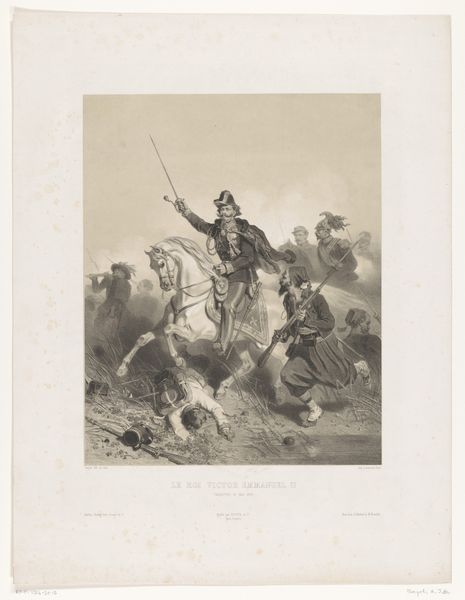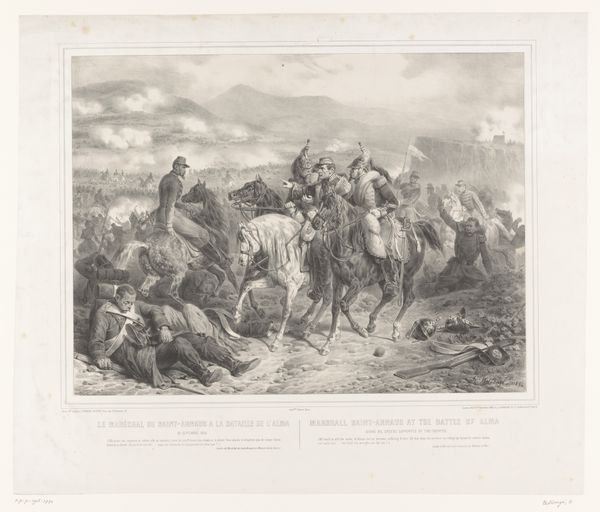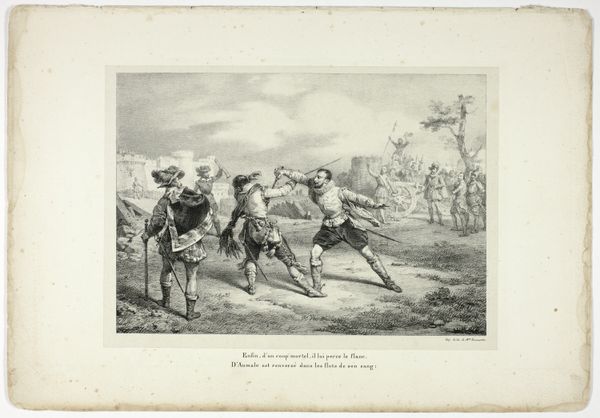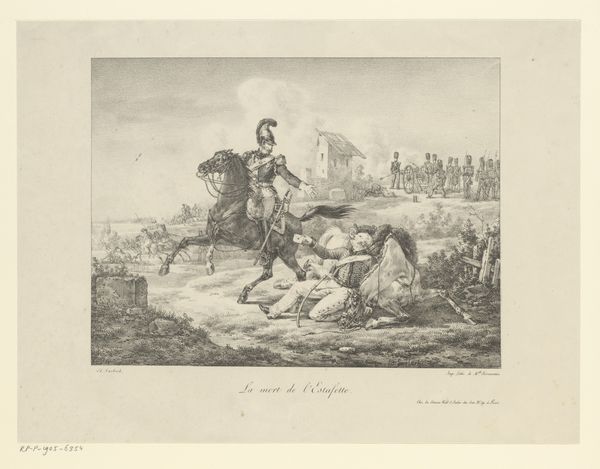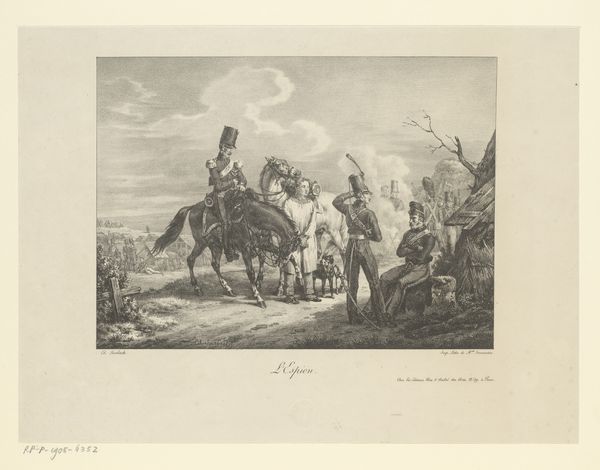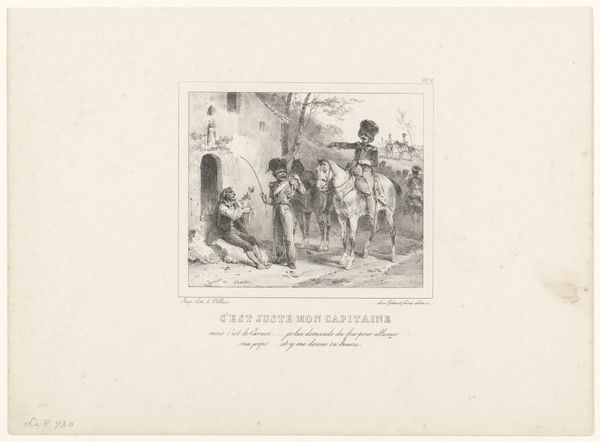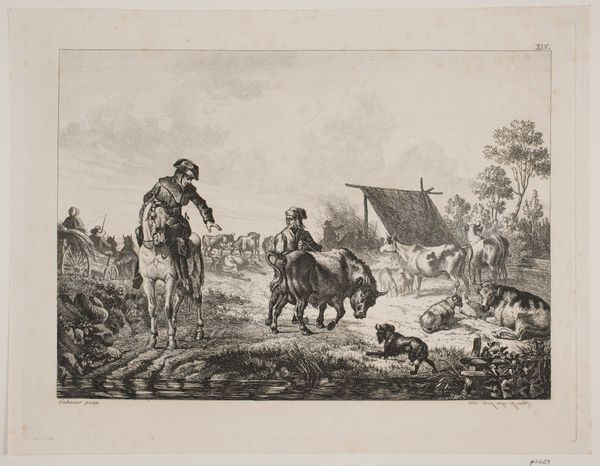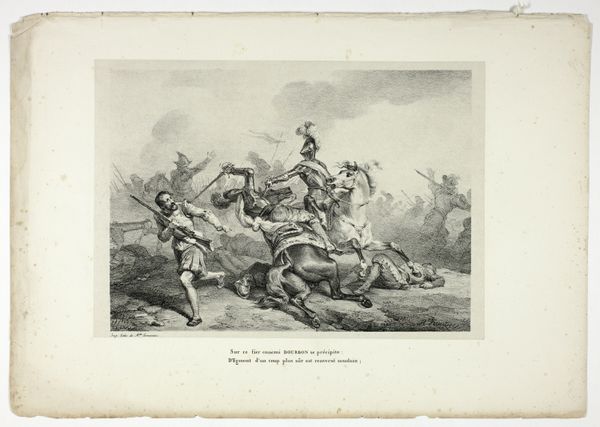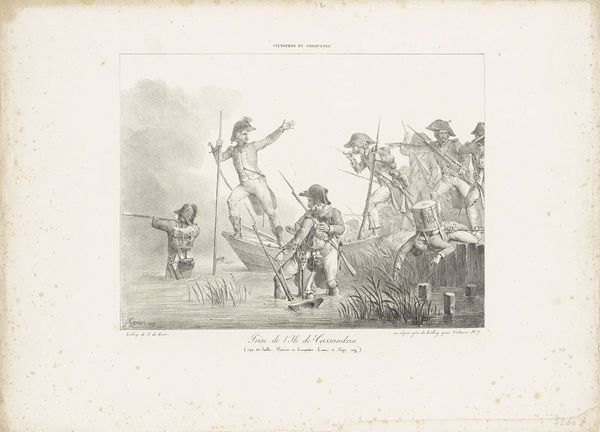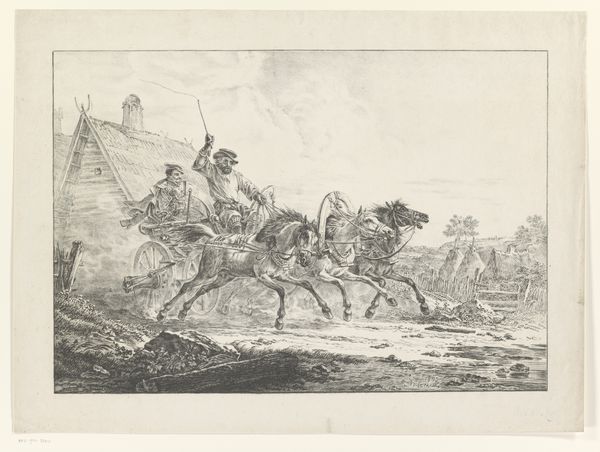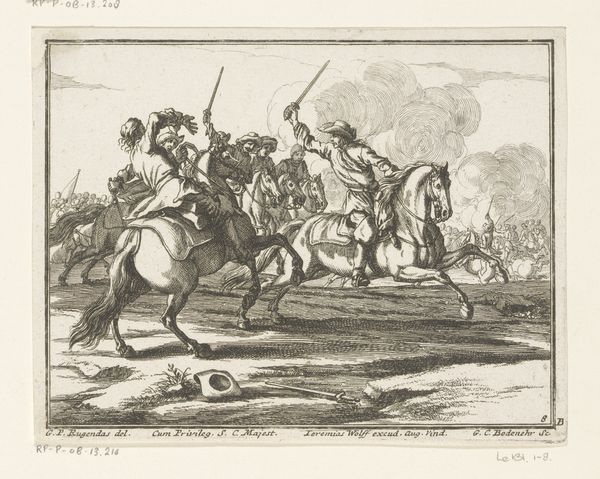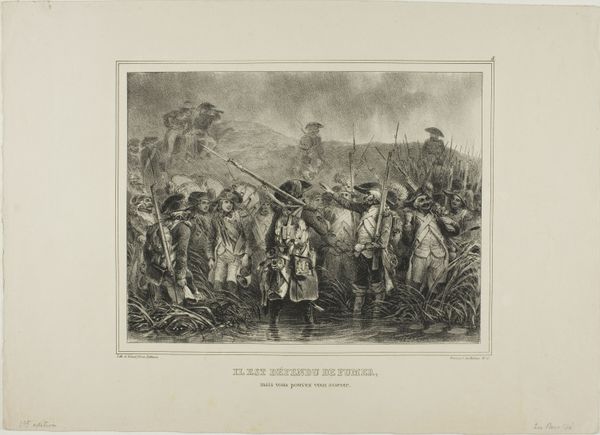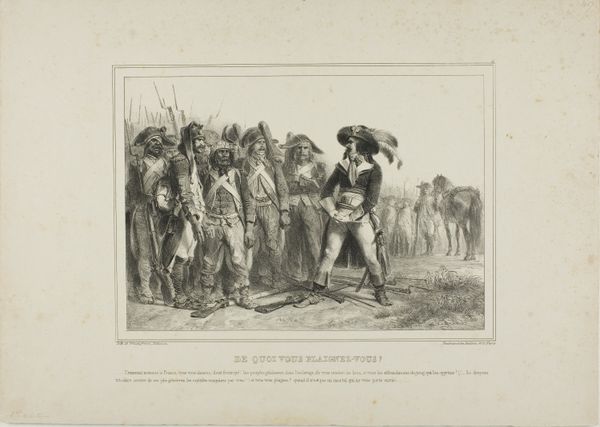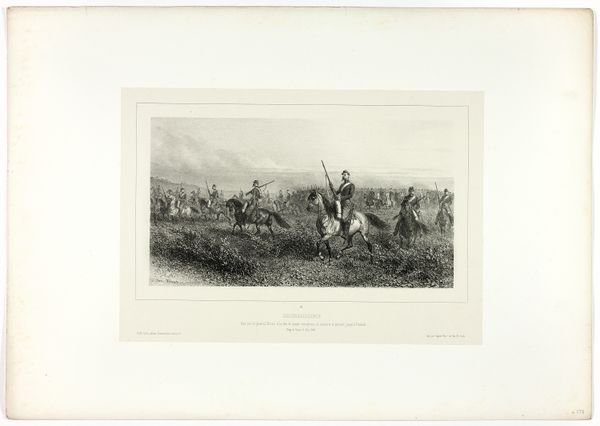
Generaal Giuseppe Garibaldi als aanvoerder in de Slag bij Varese 1859
0:00
0:00
Dimensions: height 570 mm, width 441 mm
Copyright: Rijks Museum: Open Domain
Curator: Here we see "General Giuseppe Garibaldi as leader in the Battle of Varese," a print made in 1859 by Adolphe Jean Baptiste Bayot, currently residing in the Rijksmuseum collection. My immediate impression is of heroic idealism. It seems to epitomize a Romantic vision of conflict. Editor: The composition strikes me first—the central figure elevated, almost theatrical against the misty landscape, with that prominent mountain backdrop. It definitely speaks of an intended grandeur. Curator: Note the skillful use of light and shadow in this engraving, a visual strategy very much in line with Romantic aesthetics to emphasize drama. The choice to depict Garibaldi on horseback, brandishing his sword, certainly places him as the vanguard of action, while his followers appear behind him almost fading into the mists. Editor: Absolutely, the placement and rendering are carefully staged. What can we interpret from the choice to situate this scene during the Battle of Varese, which occurred in 1859 during the Second Italian War of Independence? How does this print speak to its time? Curator: In its time, prints like this played a pivotal role in shaping public perception. By showcasing Garibaldi, a celebrated national figure, Bayot connects the battle to wider ideas about freedom and national unity. Furthermore, notice that details like Garibaldi's flowing hair and slightly melancholic gaze, speak to a carefully cultivated persona: one both romantic and strong, someone the public could rally behind. Editor: The cultural memory embedded here is palpable; these carefully constructed symbols of heroism were essential tools in nation-building and continue to resonate, revealing the enduring power of these carefully orchestrated narratives. It definitely fits into that tradition of history painting used to influence national sentiment. But where do you see cracks appearing in that ideal here, where the social history might interrupt this message of pure heroism? Curator: Perhaps in the rendering of the other figures in the print – less individualized, more types. Although intended as celebration of revolutionary moment, such symbolic presentations have, with historical perspective, become subject to discussions around exclusion, power and who gets to narrate history. Editor: That's a very useful thought. It invites us to look critically at even these seemingly straightforward celebrations of historical events. Thanks for pointing that out. Curator: Thank you, the pleasure was all mine.
Comments
No comments
Be the first to comment and join the conversation on the ultimate creative platform.
